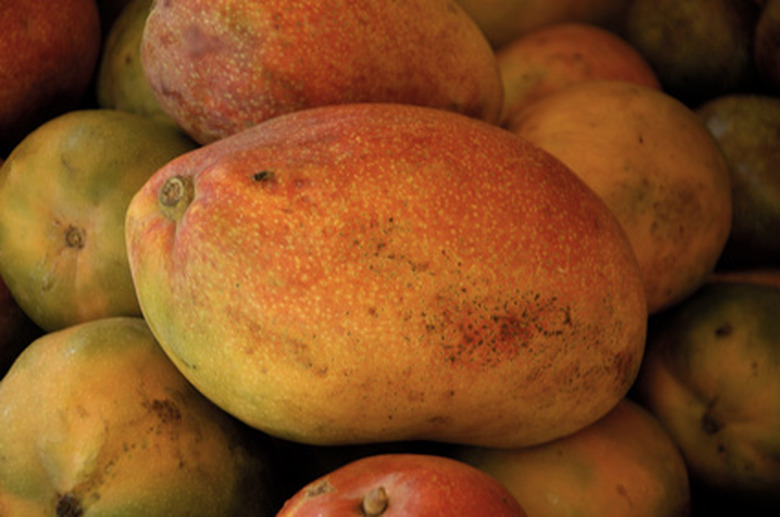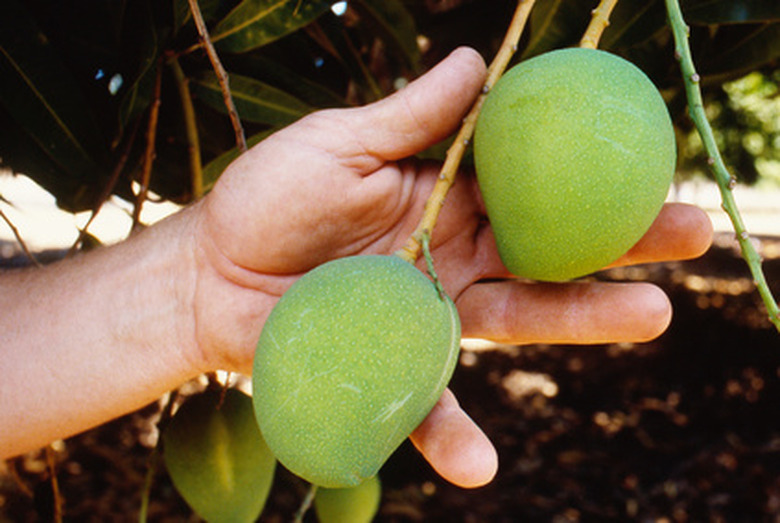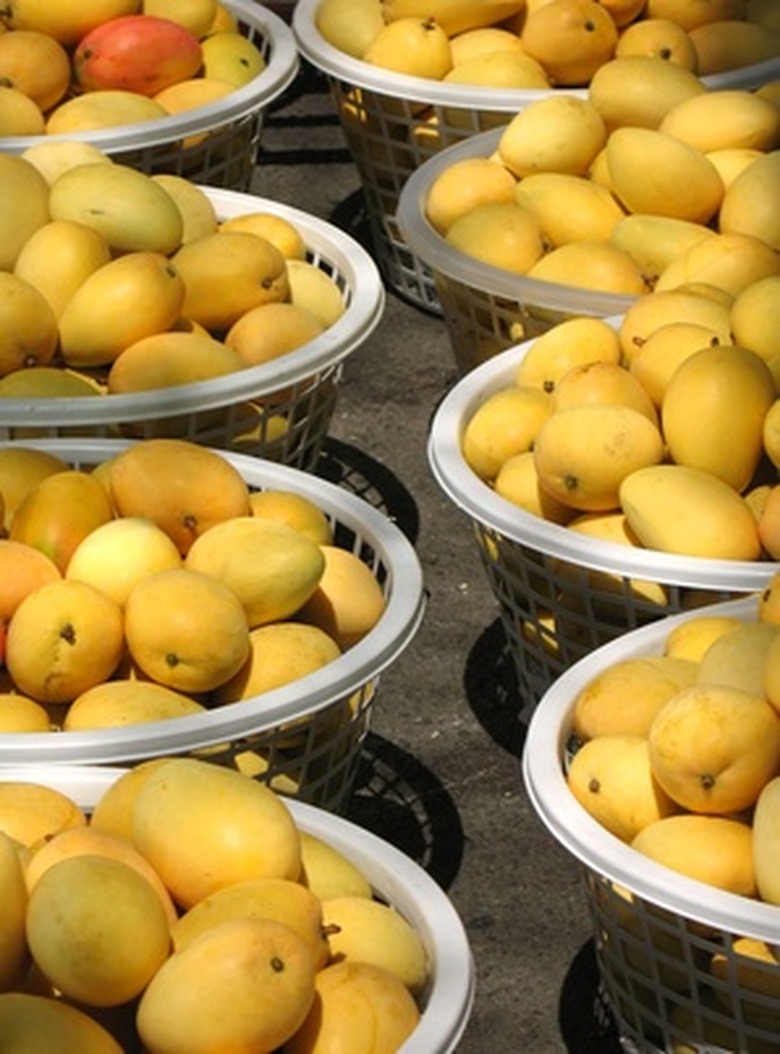Mango Trees That Grow In Central Florida
Mango trees originally came from regions with tropical conditions, occasional monsoons, sandy soil and scorching sun, so they grow well in Florida. The challenge is to keep the trees from freezing. Losing your well-tended mango tree to a hard freeze in Central Florida is a sad occurrence, but it happens. This queen of subtropical fruits is so delicious that risk of loss is no reason to not grow it.
Climate
Grafted mango trees are grown in coastal regions of Florida, south of Central Florida. They will grow in the interior of the state, but it does get colder there than in the coastal regions. In South Florida a freeze is rare, and mango trees thrive there. Whenever the temperature reaches 32 F or less, mango trees will incur some damage. Older trees may survive brief periods of these low temperatures, but seedlings will die. Protection from the cold is key to the survival of mango trees.
- Mango trees originally came from regions with tropical conditions, occasional monsoons, sandy soil and scorching sun, so they grow well in Florida.
Prevention/Solution
Some people who grow mangoes in Central Florida erect elaborate tents with heaters inside to protect their cherished trees. Others will protect the main trunk and a few branches by wrapping them in heating blankets, knowing they will lose whatever is exposed to frosty temperatures. If a tree lives through the freeze, new growth will sprout in the spring.
Environment
Sand is what Florida is made of, and it lacks nutrients. The good news is that mango trees do not care. They grow wonderfully in Florida's nutrient-lacking sandy soils; however, they benefit greatly from a few doses of fish emulsion every year.
A mango tree doesn't like to have wet feet. It grows best on a higher berm of earth so when a summer deluges dump inches of rain, the mango will be high and will dry first. Wet roots will lead to root rot and kill the tree.
- Some people who grow mangoes in Central Florida erect elaborate tents with heaters inside to protect their cherished trees.
- It grows best on a higher berm of earth so when a summer deluges dump inches of rain, the mango will be high and will dry first.
Growing Considerations
The California Rare Fruit Growers recommends planting a mango tree on the south side of a house to make use of the wind break and a heat-retaining wall. Planting on the south side of a row of tall trees is another way to take advantage of the wind break, and temperatures here will be warmer. It is also a good idea to stake young trees so they don't topple over in case of high wind, especially if their roots haven't had a chance to develop.
Benefits
Your mango tree or trees will reward you with the most delicious fruit that has the texture of peaches and a taste that is sweet, tropical, and so delicious that you will want to eat again and again. Providing heat during the coldest nights, growing trees in the right locations, and ensuring they are never too wet or too dry will ensure a slice of nectar from the gods.





